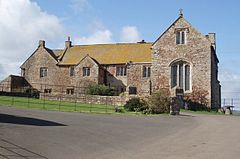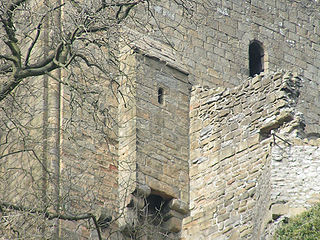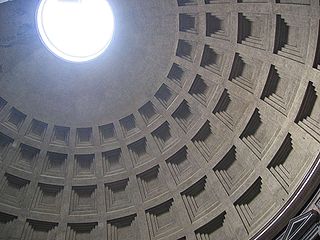
Bletchingley is a village in Surrey, England. It is on the A25 road to the east of Redhill and to the west of Godstone, has a conservation area with medieval buildings and is mostly on a wide escarpment of the Greensand Ridge, which is followed by the Greensand Way.

Hornby Village Institute is a public building in Main Street, Hornby, Lancashire, England. It is considered to be important architecturally, and is recorded in the National Heritage List for England as a designated Grade II listed building.

Stoneacre is a small National Trust property in Otham, near Maidstone, Kent in southern England. The property is a half-timbered yeoman farmer's house dating from the 15th century, together with a small garden, orchard and meadows. The house is a Grade II* listed building.

Mellor Hall is a country hall in Mellor, Greater Manchester, England, 0.4 miles (0.64 km) north of The Devonshire Arms off Longhurst Lane.

Big Bottom Farm is a farm in Allegany County, Maryland, USA on the National Register of Historic Places. The Greek Revival house was built circa 1845, possibly by John Jacob Smouse, and exhibits a level of historically accurate detailing unusual for the area. The property includes a late 19th-century barn and several frame outbuildings.

Cannington Court in the village of Cannington, Somerset, England was built around 1138 as the lay wing of a Benedictine nunnery, founded by Robert de Courcy. It has been designated as a Grade I listed building.
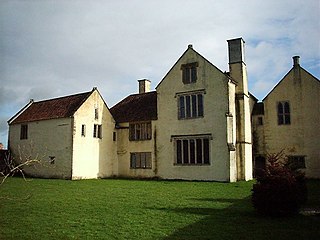
Gurney Manor in Cannington, Somerset, England is a 13th-century manor house with an attached chapel wing, is now supported by the Landmark Trust and is available as holiday accommodation. It has been designated as a Grade I listed building

The Luttrell Arms in Dunster, Somerset, England was built in the late 15th century and is located in the centre of the medieval town of Dunster. The building has been designated as a Grade II* listed building since 22 May 1969. The original building has been enlarged over the years by addition of further wings. It is now used as a hotel.
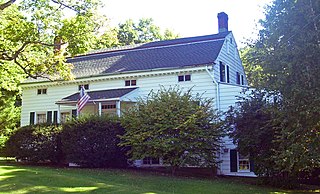
The Stephen Miller House, also known as the Van Wyck-Miller House, is located along the NY 23 state highway in Claverack, New York, United States. It is a wooden farmhouse dating from the late 18th century.

The Terwilliger–Smith Farm is located on Cherrytown Road near the hamlet of Kerhonkson in the Town of Rochester in Ulster County, New York, United States. It was established in the mid-19th century.
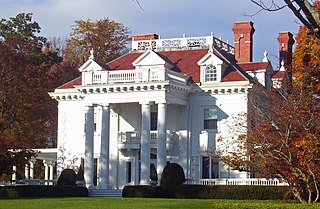
Hiddenhurst is the former estate of businessman Thomas Hidden, on Sheffield Hill Road in the Town of North East, New York, United States, south of the village of Millerton. It is an elaborate frame house built at the beginning of the 20th century in the neo-Georgian architectural style.
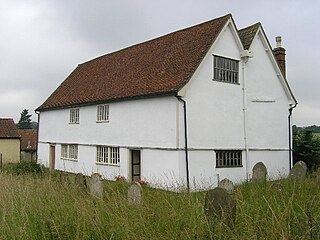
Walpole Old Chapel is a redundant chapel in Halesworth Road, Walpole, Suffolk, England. Originally two farmhouses, it was converted into a chapel in the 17th century. It continued in use into the 20th century but closed in 1970. It is now owned by the Historic Chapels Trust.
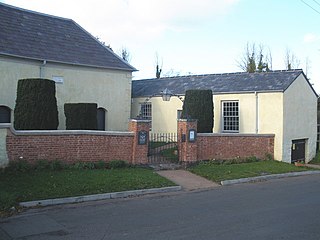
Salem Chapel, East Budleigh is in Vicarage Road, East Budleigh, Devon, England. Initially a Presbyterian, then a Congregational chapel, it was later owned by the Assemblies of God, and is now owned by the Historic Chapels Trust. The chapel, together with the adjacent assembly room and the boundary walls, is recorded in the National Heritage List for England as a designated Grade II* listed building.
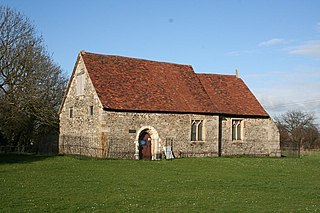
Elston Chapel is a redundant Anglican church to the northeast of the village of Elston, Nottinghamshire, England. It is recorded in the National Heritage List for England as a designated Grade I listed building, and is under the care of the Churches Conservation Trust. It stands in a field and is described as a "solitary barn-like chapel".
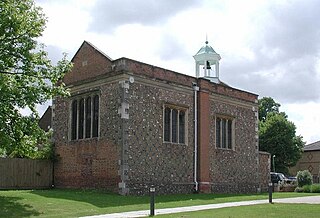
Oxhey Chapel is a redundant Anglican chapel in Oxhey, a suburb of Watford, Hertfordshire, England. It is recorded in the National Heritage List for England as a designated Grade II* listed building, and is under the care of the Churches Conservation Trust. The chapel stands, surrounded by 1940s housing in South Oxhey between a modern church and its vicarage, some 2 miles (3.2 km) south of the centre of Watford.
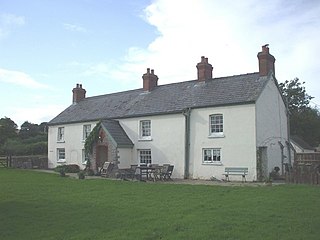
Lidmore or Lydmore is a small hamlet and farm in the Vale of Glamorgan. It is located just off the A4226 road, to the northwest of Highlight Park in Barry, Vale of Glamorgan and in close proximity to Brynhill Golf Club. To the north is Great Hamston and Dyffryn and the hamlet is accessed through another hamlet called Northcliff from the main road. To the southwest is Lidmore Wood and the Welsh Hawking Centre.

Poole Methodist Chapel is in Wettenhall Road, Poole, Cheshire, England. It is an active Methodist church in the Cheshire South Methodist Circuit. The church is recorded in the National Heritage List for England as a designated Grade II listed building.

Horne's Place Chapel, is a late mediaeval timber-framed house with private chapel in Appledore, Kent England.

The Lack is a Grade II* Listed Building, formerly in the historic parish of Churchstoke but now in the parish of Chirbury with Brompton in Shropshire. It is likely to have been built in the latter part of the 16th. century.

Our Lady of Assumption Convent is a heritage-listed former Roman Catholic convent at 8 Locke Street, Warwick, Southern Downs Region, Queensland, Australia. It was designed by Simkin & Ibler and built from 1891 to 1914. It is also known as Assumption College, Cloisters, and Sophia College. It was added to the Queensland Heritage Register on 21 October 1992.
